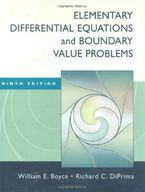Solution: Change of Variables. Sometimes a differential equation with variable
Chapter 3, Problem 34(choose chapter or problem)
Change of Variables. Sometimes a differential equation with variable coefficients,y + p(t)y + q(t)y = 0, (i)can be put in a more suitable form for finding a solution by making a change of the independentvariable. We explore these ideas in 34 through 46. In particular, in weshow that a class of equations known as Euler equations can be transformed into equationswith constant coefficients by a simple change of the independent variable. 35 through 42 are examples of this type of equation. determines conditions under which the more general Eq. (i) can be transformed into a differential equation with constant coefficients. 44 through 46 give specific applications of this procedure. Euler Equations. An equation of the formt2 d2ydt2 + tdydt + y = 0, t > 0, (ii)where and are real constants, is called an Euler equation.(a) Let x = ln t and calculate dy/dt and d2y/dt2 in terms of dy/dx and d2y/dx2.(b) Use the results of part (a) to transform Eq. (ii) intod2ydx2 + ( 1)dydx + y = 0. (iii)Observe that Eq. (iii) has constant coefficients. If y1(x) and y2(x) form a fundamental setof solutions of Eq. (iii), then y1(ln t) and y2(ln t) form a fundamental set of solutions ofEq. (ii).
Unfortunately, we don't have that question answered yet. But you can get it answered in just 5 hours by Logging in or Becoming a subscriber.
Becoming a subscriber
Or look for another answer
